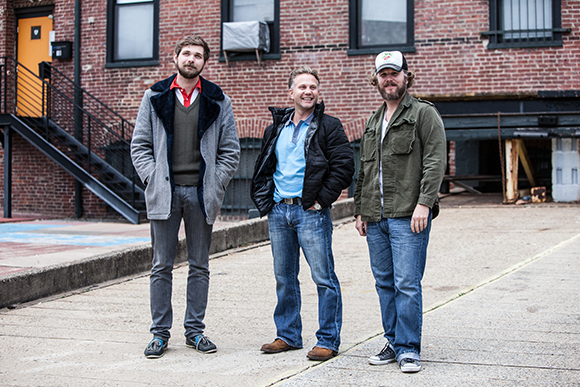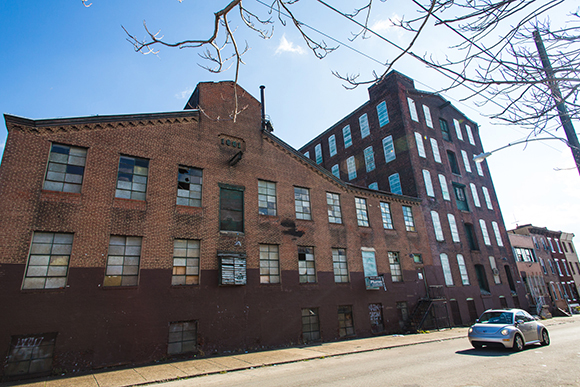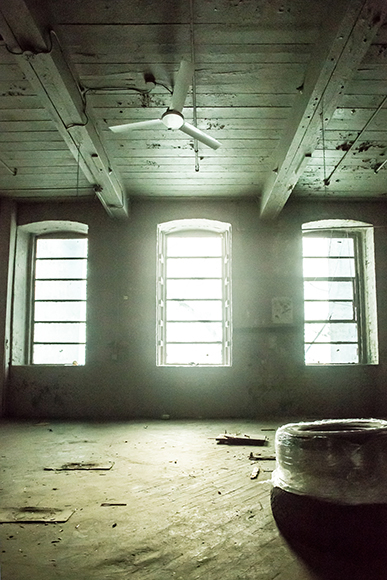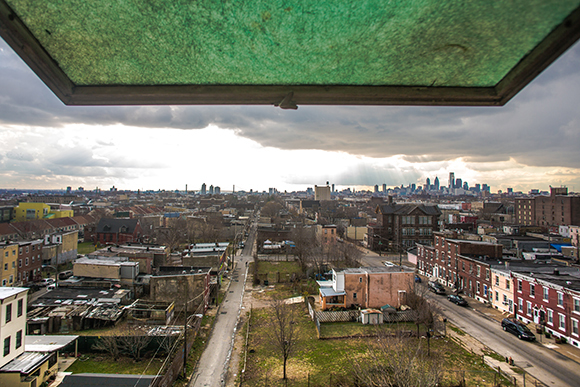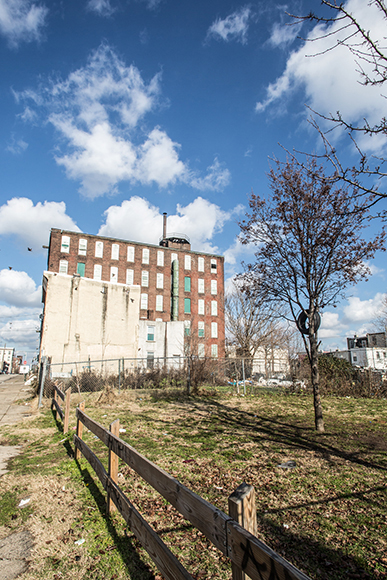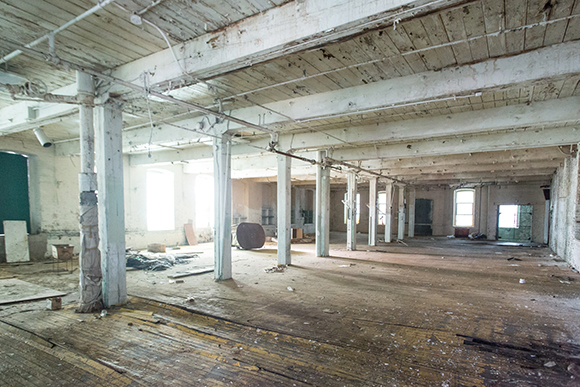178 West Huntingdon Avenue is not what most Philadelphians would consider a desirable address. Huntingdon intersects Hancock Street in a part of Kensington commonly referred to as “the badlands” thanks to its reputation as a haven for drug crimes. The area has no civic association, and is a bit too far away from the flourishing neighborhoods of Fishtown and Northern Liberties to bask in their hip vibe.
Despite these limitations, the building at 178 West Huntingdon recently generated a bit of buzz. A Craigslist post recast the vacant warehouse as a community of affordable loft-style apartments, beckoning potential renters with the promise of “high end living for less!” Plans included twenty-nine 700-750 square-foot one-bedroom lofts starting at $750 per month.
Bloggers debated the feasibility of the project — Curbed Philly snarked on the “BrokerBabble” promising “new amenities” and “New York loft-style” units — without realizing that the Craigslist ad was a market research tool asking those very same questions. The team behind the potential project thought they had calibrated the neighborhood correctly and anticipated a positive response to the ad. They were right.
Investor Gerard Galster Jr. of Magella Real Estate and architectural designers Russell Mahoney and Dave Frazee of the design collective Broken Arrow Workshop have successfully collaborated on building rehabilitations before. This fall, Flying Kite profiled the Hatchatory, another warehouse conversion by the team in East Kensington. Now a collective of modern loft workspaces, the beautiful rehab houses 26 small businesses.
From Mahoney's perspective, it's foolish not to invest in the area. They see Kensington as the inevitable next hip neighborhood, complete with affordable rents, interesting architecture, potential artist live/work spaces and proximity to the vibrant nightlife in Fishtown. They can build and renovate affordably, and then wait for the next wave of urban pioneers to follow.
Like the Hatchatory, the building at 178 West Huntingdon is a former manufacturing plant that closed in the mid-'90s. It features five stories and 40,205 square feet of usable space. Evidence of its former life as a ribbon factory still litters the property — a huge bolt of fabric suspended in a loading dock, buttons strewn across the floors. The building will soon be rid of those ghosts, thanks to Broken Arrow and its contracting partner Shovel Ready LLC.
Initially constructed as three separate buildings, the property was haphazardly connected sometime in the '60s. As part of the restoration process, Mahoney’s team plans to separate the buildings. Creating distinct structures enables them to zone each building separately, allowing Broken Arrow to create both commercial and residential space. The surrounding property will serve as parking — secured spots for 27 residential units, with additional spots for shared car services. Secure bicycle parking will be located indoors.
Location remains the largest question mark. Skeptics view the address as an obstacle to overcome, but Galster actively sought out property in the area. His team searched along the American Street corridor for about a year before finding the building, a block away. Doubters, it happens, are nothing new for the developer, one of the first to invest in property in Fishtown in 1998, well ahead of the neighborhood’s revival.
“We were looking for something close to American Street because it’s being developed right now as a commercial corridor,” says Mahoney. “It gives drivers quick access to Center City. Public transportation is also easily accessible—the El is only a few blocks away and buses run through the area.”
Of course, speculating about a location’s potential and actually transforming it into a sought-after site are two very different things. In 2005, a Brooklyn-based developer bought the property — the only “development” that followed was water damage resulting from eight years of neglect.
The building certainly shows signs of disrepair — including a facade marred by broken glass — but a tour of the property with Mahoney and Frazee quickly reveals its hidden potential. The beauty of the building’s symmetry and classic design elements becomes obvious as its wide-open spaces flood with natural light. The windows lining every wall offer unobstructed views of the Philadelphia skyline stretching all the way to New Jersey.
“Believe it or not — it looks messy — but this building has great bones,” says Mahoney. He explains that most of the damage probably occurred in the last few years, when the roof failed. After a new roof is put on, the floors and plywood will be replaced in what he calls “easy fix” repairs.
The building’s mostly intact electrical system is a rarity for any vacant property. Before beginning work to demolish and replace remaining wire and pipe, the team was especially surprised to see highly valuable copper still in place and not stripped for scrap metal. Mahoney credits this lack of looting to another of the building's hidden treasures: Juan Ortiz, the self-made businessman and neighborhood patriarch who leases the first floor for his variety shop, called simply “Mr. Ortiz.”
Mahoney explains that though the neighborhood is plagued by addiction and unemployment, it is home to a tight-knit community with Ortiz at its epicenter. The unofficial mayor presides over a small empire that includes a junkyard of cast-iron radiators, an impeccably painted Flamingo-pink salvage shop, the first floor of 178 Huntingdon and a truck with his name emblazoned across its side.
When Magella Real Estate took ownership of the building, Ortiz retained its only set of keys — an arrangement that ensured mutual respect between the new owners' and the longtime resident. Mahoney sees these community relationships as vital to the project’s ultimate success.
“Which came first? Did Mr. Ortiz form the community, or did the community make Mr. Ortiz?” muses Mahoney. “I don’t know the answer. But what I do know is that the ecosystem that is here, the community that is present, make this project possible. Because we cannot go into an area where they don’t want us.”
Mahoney estimates that zoning of the property will be completed in the spring, and that subsequent construction will take about six months. If everything goes as planned, Magella Real Estate will invite the respondents from the initial Craigslist ad to submit formal rental applications by the summer, with a move in date in late 2013.
By that time, 178 West Huntingdon Avenue will undoubtedly be a much more desirable address.
NICOLE WOODS is a social media consultant and freelance writer living in Delaware County. Send feedback here.
All photographs by Danette Pascarella

